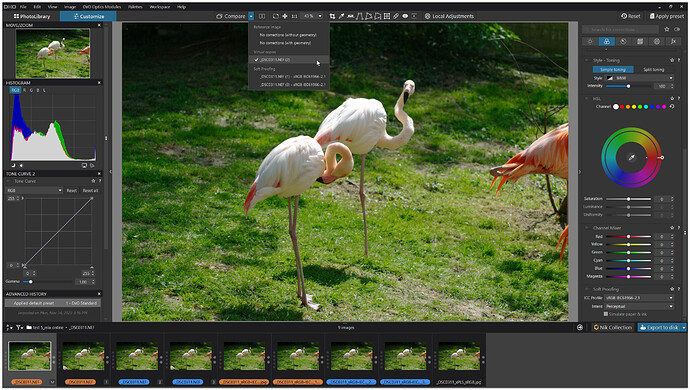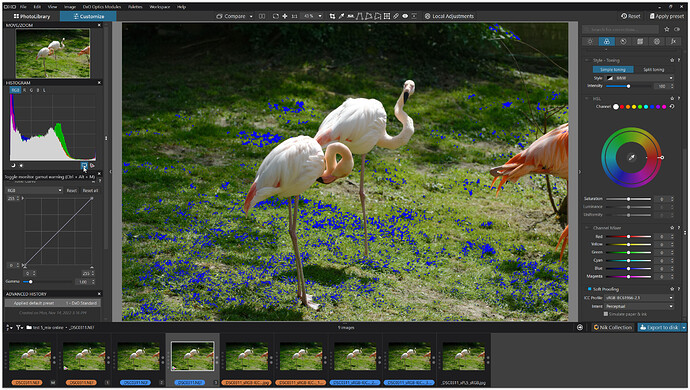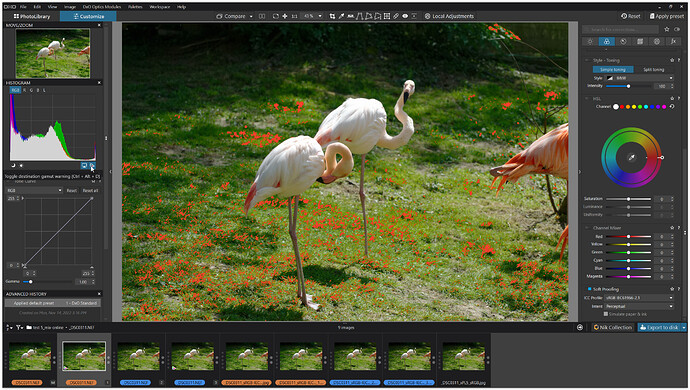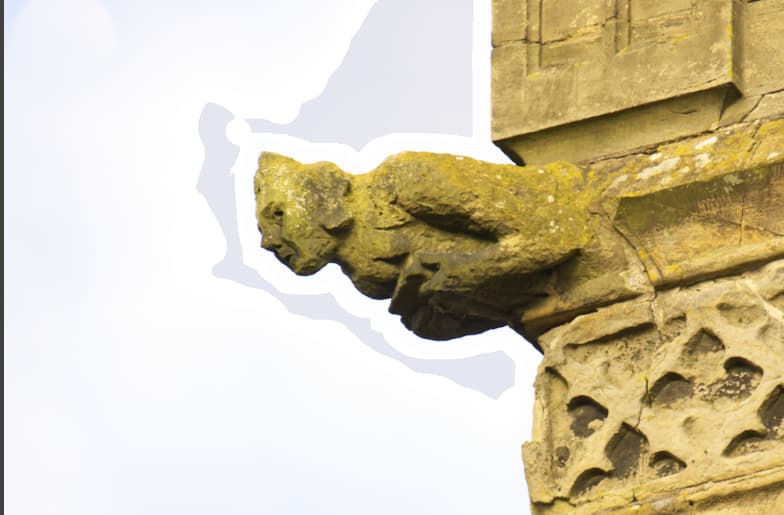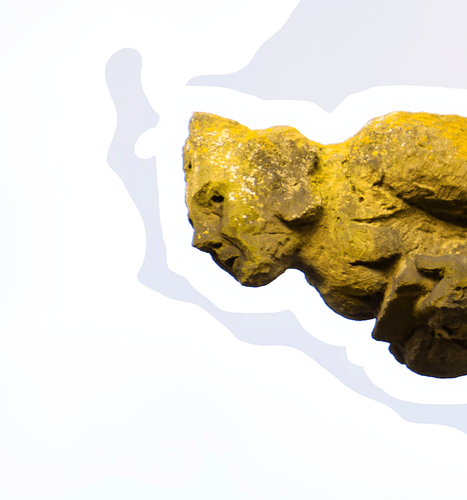Meanwhile, we’ll keep DPL5 up and running, carefully avoiding DPL6 to write DOP files automatically, should we use both DPL5 and DPL6…
Yet another pitfall for unsuspecting users which DxO could fix by either writing version-specific dop files or maintaining version-specific sections in a shared dop file. The versions shouldn’t be stepping on themselves the way they currently do.
This has been discussed in the past though, so nothing new.
PL6 loads images worked on in earlier versions of PL in the legacy working color space, to keep the rendering the same. Is this not sufficient?
No, because someone who trials a new version of PL and isn’t aware that it might write dop files that their existing version can’t interpret (and doesn’t know that they should have disabled dops before the trial) may be in for a surprise if they decide to stick with their existing version. You can go forward, but not necessarily back.
I agree completely. If DXO would produce some clear, and consistent documentation on the topic of color management specifically for DXO users, that would go a long way to clear up some of the confusion apparent at the moment. I know that I used to think of myself as semi-competent when it came to color management. But lately, I feel that I might be confused and not know it…haha.
Do you mean that even work done in PL<6 is being rendered differently in PL6? That is, just open an image that was edited in a previous version and get a slightly different rendering in an export and/or on the display?
That’s a real line in the sand for me since it invalidates editing done in previous versions.
I’ve seen slight differences when I stacked two exports (DPL5 and DPL6 at legacy WCS) in Photoshop and amplified the difference as shown in a post or two. Differences can exist but are really subtle in a way that they are well within any tolerance of involved gear/software/processing etc. Moreover, differences show in images with saturated colours mostly.
I’m not that obsessed with tiny differences, after all, we’re not feeling the same every day…
Interesting, and I agree. I know color rendering has changed a bit across previous versions of PL and its predecessor, too - sometimes significantly (and IMO for the better since OpticsPro became PhotoLab). Thinking about this, though… If the differences between PL5 and PL6 (Legacy WCS) are only measurable in export or with soft proofing, they can probably be attributed to the new algorithm meant to preserve detail in saturated colors (the PSCA). Otherwise, perhaps there’s more complex tweaking of the pipeline in PL6 or some difference in the ICC profiles used for export? Or even differences in the noise reduction algorithm or another part of the demosaicing process?
The default setting of Smart Lighting seems less reliable to me in PL6, for what it’s worth. Might just be how it handles the DxO Wide Gamut WCS, but I wonder if it could have been adjusted in a way that impacts results with the legacy WCS, too. One other thing that’s bitten me a couple of times now is that some lens correction profiles aren’t working properly in PL6. (Too much vignette correction or not enough.) And the FilmPack features keep being affected by new PhotoLab releases.
So there’s a lot to test if one wants to isolate the reason for rendering differences in PL6 vs. PL5. But I am guessing this really isn’t a worry.
Sure, but small differences over many versions will add up over several upgrades. I’m not keen on having to see PL as a tool that I have to continually export from to retain a rendering I’ve arrived at.
I remember Skylum Luminar 2018 (which I otherwise quite liked) being unusable across even minor updates.
While I can absolutely agree with your reluctance, I nevertheless have to say that processing in DPL is an ever evolving thing, unlike a TIFF or JPEG file, both of which are fairly old and tried formats.
Therefore, it might be wise to keep processed files of the few extraordinary shots we took, in order to preserve what we thought optimal at the time.
PL6 Wide Gamut vs. PL6 Classic-Legacy
Complementing my findings from post #31, I compared DxO’s Wide Gamut WCS with the Classic-Legacy and also included an export from the former PL5.
like before → DxO Standard, sRGB screen
_DSC0311.NEF (15,9 MB)
but new
_DSC0311.xmp (8,0 KB)
_DSC0311.NEF.dop (41,0 KB)
.
1.
pic #1 = WG
Wide Gamut = orange
Classic-Legacy = blue
softproof & export with sRGB IEC61996-2.1 profile
PL6
pic #1 = Wide Gamut
pic #2 = WG / softproof from pic #1
pic #3 = Classic-Legacy
pic #4 = CL / softproof from pic #3
.
pic #5 + 6 = WG / export from pic #1 + 2
pic #7 + 8 = CL / export from pic #3 + 4
PL5
pic #9 = export from PL5 with sRGB profile
.
2.
pic #2 = WG / softproof from pic #1 → Monitor gamut warning
.
3.
pic #4 = CL / softproof from pic #3 → Monitor gamut warning
.
4.
pic #2 = WG / softproof from pic #1 → Destination gamut warning
.
5.
pic #4 = CL / softproof from pic #3 → Destination gamut warning
.
comparing the screenshots
- 2 vs. 3 → the Monitor gamut warning area in screenshot 3 is slightly reduced
- 4 vs. 5 → the Destination gamut warning area in screenshot 5 is slightly reduced
which means …
-
The PL6 Classic-Legacy mode reduces some of the out-of-gamut colours
and the export output from Wide Gamut is richer than from Classic-Legacy !
→ export from pic #1 or 2 (WG) and from pic #3 or 4 (CL) to compare them
→ add an export from PL5, which is identical to pic #7 and 8 (CL) -
Make use of the softproof to get a “true” WYSIWYG → PL6.
Of course, but if PL becomes a moving target from version to version then there are other applications that do a better job. Both Capture One and Exposure inspire more confidence with their process versions than does PL’s non-existent version handling and best effort approach to backwards compatibility.
FYI: I’ve just made a very concerning “discovery” …

The new Wide-Gamut option for working color space IS included with the Essential version …
But, Soft Proofing is not !!

Wow ! - That really is NOT a good thing … because, without Soft Proofing, a WYS-is-WYG result is NOT guaranteed.
John
Its baffling what they do at times and how they arrive at what they do is beyond me as well. Like lack of support for phone DNGs, the fastest growing sector but to not do soft proofing when its clear for many this is the best way of arriving at an accurate output with wide gamut is beyond me.
They have also messed up the ability to use DCP. I opened a few old images and many had distortion which was only removed by changing from my DCP to the default PL one. I find I now have a large number of edits made usless in 6 by these changes unless I remove the DCP used,. Clear areas such as the sky in this one are where it shows most.
DCP used
PL camera used
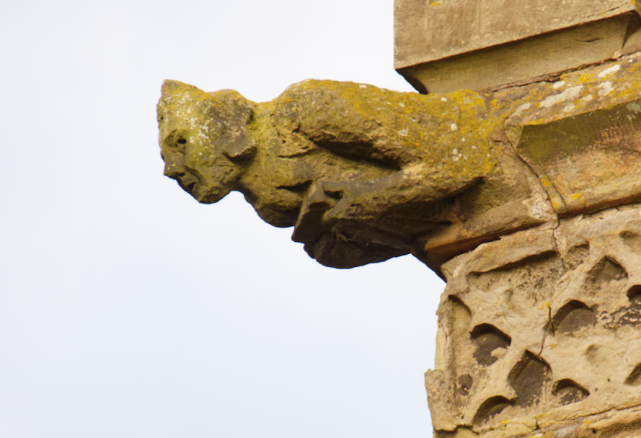
Put it in as a bug report, makes use DCP use impossable as you can’t prdict what stuped things they will do in the future
Does that weird haloing show up in export or just in the viewer? I’ve seen it in the viewer without using dcp profiles and a restart of PL6 fixed it.
This brings me back to the option to select a display profile which was removed from PL6 and I believe would resolve a lot of issues if it was brought back. Simply select a display profile such as sRGB and PL6 should work just like PL5.
I’m under the impression that it doesn’t need to be brought back. For one thing, it might be possible for PL6 to get the display profile from the OS. But more immediately, Soft Proofing replaces the option in PL6 and ensures WYSIWYG. It’s an all-in-one tool for representing the output accurately, which I don’t mind even if the idea of using it for your primary monitor is very weird. But that makes Soft Proofing an ESSENTIAL tool, right? ![]() So rather than rewrite a redundancy into PL6, I think PL should rethink what the Essentials version of PL should be, not to mention the relationship between PL and ViewPoint (which is also strange).
So rather than rewrite a redundancy into PL6, I think PL should rethink what the Essentials version of PL should be, not to mention the relationship between PL and ViewPoint (which is also strange).
That makes no change at all and its there in exports.
Export of original V5 imige2 from V6
Screen clip from Soft Proofing
Its more fundermatal I fear, they have messed up DCP with V6
Even if it went in export it would result any editing being totally unreliable.
PL has been restarted a number of times as well.
The original file, but I have the same on many others as well.
_DSC2815.ARW (23.9 MB)
DCP
3_CF A6400 Medium V2.zip (221.7 KB)
dop is usless as with out DCP being installed in the same location as I have the imige will not open (another bug wating to be corrected)
